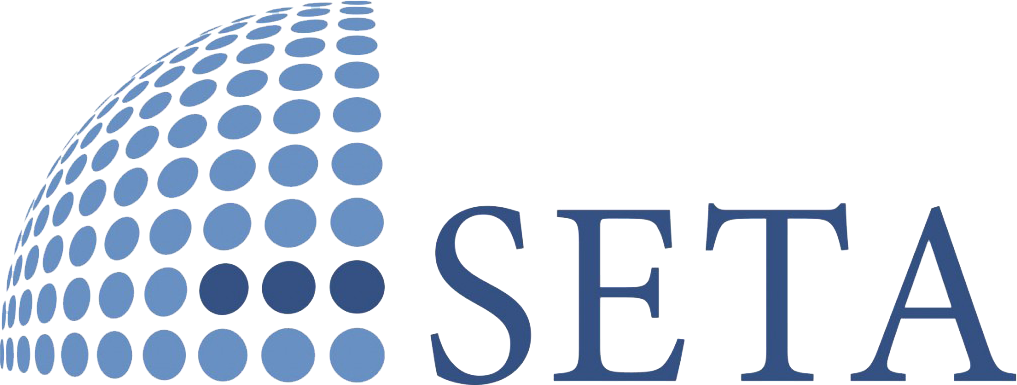Turkey’s New Government Model and the Presidential Organization
What is the perspective of Turkey’s new government model based on the presidential system? What are the functions of offices and councils (and departments) in the presidential organization? How are ministries in the new government model structured? What are the differences and similarities of the newly designed government model with government structures in other presidential systems?
More


Österreichischer Islamophobiebericht 2017
Dieser Bericht ist als Teil des englischsprachigen European Islamophobia Report entstanden. Der Österreichische Islamophobie-Bericht 2017 bildet dabei den Länderbericht für Österreich ab. Ziel dieses Berichtes ist es, die Entwicklung und den Status Quo von Islamophobie im jeweiligen Kalenderjahr aufzuzeigen.
More
This report examines and provides an introduction to the decision to hold the elections early and the platforms and candidates that the major political parties are putting forward in the June 2018 elections. As noted, there are a number of candidates for the presidency from the AK Party, the CHP, MHP, HDP, IYI Party, SP, and other parties. In the parliamentary elections, there are two major electoral alliances, a new feature in Turkish elections.
Is the institutional structure sufficiently trustworthy regarding management and supervision of elections in Turkey? What are the regulations introduced by the Election Safety Law and what are their purpose? What does the decision to move and combine ballot boxes mean? Are the criticisms justified?
How has the PKK gained a vast territory in Iraq and Syria? What was the strategy of the PKK’s territorial gain? Is the Turkish strategy for the de-territorialization of the PKK working? What challenges will Turkey face?
This book is the result of a research project organized by the Foundation for Political, Economic and Social Research (Siyaset, Ekonomi ve Toplum Araştırmaları Vakfı, SETA) born out of the need to understand the context-specific dynamics of the violent radicalization of the PKK and its urban strategy between 2015 and 2016. The aim is to explore the causes, new dynamics, and effects of PKK terrorism, and to explain the failure of its urban warfare tactics in Turkey.
Untangling The Extradition Case of FETO
This paper focuses on the bilateral extradition treaty as well as the national and international law to analyze the extradition process. First, it presents the background information and the role of the perpetrator on the coup attempt on 15 July 2016 based on the prosecution’s case in Turkey.
More


The Manbij Agreement and Beyond
What was the strategic importance of Manbij for the United States, the PKK/PYD, and Turkey? What topics will be covered by the roadmap in Manbij? How sincere is the U.S. with Turkey about its PKK/PYD policy? Will U.S. military activity in Sinjar Mountain jeopardize Manbij Agreement?
More
What were the United States’ aim and strategy? In what direction is the U.S. strategy transforming? Is a compromise of both achievable if Turkey’s aim and strategy is taken?
US action has dramatically altered and defined the diplomatic landscape, both with regard to Jerusalem and, more broadly, the parameters of the Israeli-Palestinian, Israeli-Arab, and US-Arab relationships.
How can we contextualize the initiative for banning the hijab? What is this ban’s main function? Is this law just another step of introducing discriminatory laws that treat Muslims differently than other religious groups? What can the Islamic Religious Community do about these plans?
The study argues that specific developments such as the territorial decline of DAESH, and counterterrorism experience ensured the prevention of more terrorist attacks by DAESH terrorists.
How can we contextualize the initiative for changing the Qur’an? What are the philosophical bases of this initiative? Is there a genealogical connection to the Islamophobic network? What is the main function of this initiative?
Why did the Lafarge Group strike agreements with DAESH, the YPG, Al-Nusra and other terrorist groups in Syria? Was the French state involved in such agreements? If so, to what extent? How do these incidents impact the Lafarge Group and the French state?
Why is the PKK targeting the Turks living in Germany? To what extent is the PKK a threat to Germany? What is Germany’s policy towards the PKK?
This is the third issue of the annual European Islamophobia Report (EIR) consisting of an overall evaluation of Islamophobia in Europe in the year 2017, as well as 33 country reports which include almost all EU member states and additional countries such as Russia and Norway. This year’s EIR represents the work of 40 prominent scholars and civil society activists from various European countries.
In numerous European countries, there has been a wave of prohibitions against Islamic practices ranging from ritual animal slaughter to the building of mosque minarets, from male circumcision to women’s headscarves.
What is the strategic reasoning behind Turkey’s military operation against the PKK in the Afrin region? What does Turkey’s game plan mean for the region? What are the implications of Turkey’s military operation for the future of the Turkey-U.S.-Russia triangle?
What are the policy divergences between Turkey and the US in Syria? What is the US policy to stabilize Syria after the demise of ISIS? How will the Afrin operation influence US-Turkey relations?
Emerging trends in the European political context, including the rise of nativist nationalism and the emergence of hostile public discourses on immigration, have brought ideas traditionally attributed to the far-right into mainstream discussion, in the process popularising and in some cases ‘normalising’ them in the eyes of particular audiences. Especially since the turn of the new millennium, the discussion on the dynamics of, and threats from, violent radicalisation has received considerable fresh attention since a series of recent terrorist attacks testified to its highly disruptive and destructive potential. Taken together with the appreciable rise in instances of hate speech and in violent incidents against vulnerable groups (Muslim, Jewish, Roma communities; immigrants and refugees, etc.), it is now feared that we may be witnessing a much broader and profound ‘reverse wave’ towards more intolerance, exclusion, and normalisation of violent extremism in contemporary societies.

















